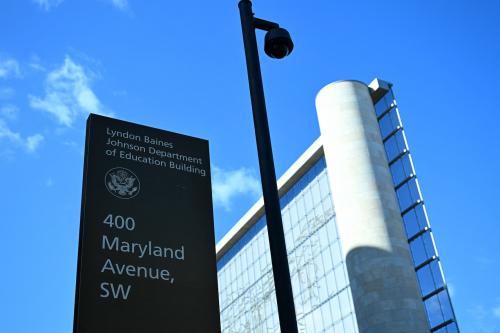As voters in Idaho, Michigan, Mississippi and Hawaii heads to the polls on Tuesday for the GOP primary, they should take a closer look at the frontrunner’s tax plan and what that could mean for their wallets.
Donald Trump’s plan would sharply reduce the top tax rate on individual income from 39.6% to 25% and broadly reduce rates for individuals with lower incomes. His plan would also lower the tax rate on corporate income from 35% to 15%, and apply this 15% to other “business income.”
While his plan limits certain tax preferences and deductions, it does not include any reductions in federal spending. As a result, the Trump plan increases the federal deficit over the next decade by $10 trillion or $12 trillion, according to several estimates that do not include macroeconomic changes in GDP, investment and employment. Of course, these so-called “static” estimates do not reflect the potential tax revenue from the economic growth resulting from lower tax rates. However, even under “dynamic” scoring, which takes into account a broad range of macroeconomic effects of tax proposals, his tax cuts would still expand the federal deficit over the next decade by $10 trillion — on top of the $10 trillion increase in the federal deficit already projected under current law.
Let’s consider two prominent analyses of the Trump tax plan — one by the Tax Foundation and the other by the Tax Policy Center. Despite their different methodologies, they both estimate that the Trump plan would cut tax revenues by over $10 trillion in the next decade.
Starting with a “static” analysis, the Foundation estimates that the Trump plan would cut tax revenues by $12 trillion. Then, using “dynamic” scoring, the Foundation says that the lower tax rates will generate higher GDP growth and more jobs. Nevertheless, the Foundation still concludes that the Trump tax plan will reduce tax revenues by $10.18 trillion over the next decade.
Most importantly, the Foundation’s prediction of more economic growth is based on a dubious assumption about the Trump plan —”provided that the tax cut could be appropriately financed. ” In other words, the Foundation assumes that Trump’s plan would offset its huge tax cuts by similar reductions in federal spending. Yet, Trump’s plan contains no such spending reductions.
By contrast, the Center uses a model that allows for individual behavior responses but not macroeconomic effects, such as the rise in interest rates. The Center initially estimates that the Trump plan would decrease tax revenues by $9.5 trillion over 10 years. The Center then increases this estimate to $11.2 trillion to reflect the incremental interest that the US Treasury would pay on the additional $9.5 trillion in national debt — since the Trump plan has no cuts in federal spending.
Could Trump find $9.5 trillion in spending cuts to finance his tax cuts?
He seems to oppose lower benefits for Medicare and Social Security. If entitlement cuts are out of bounds, then he would need to slash all discretionary federal spending by 80%. This means debilitating cuts in defense budgets and key domestic programs like education and research.
Although the Center does not do a “dynamic scoring” of Trump’s plan, the Center recognizes the potential economic growth resulting from the lower tax rates in the plan. Nevertheless, the Center explains that unless Trump’s enormous tax cuts are offset with very large spending cuts, “they’d increase the national debt and drive up interest rates, thus neutralizing their economic benefits.” The Center’s concerns about the impact of budget deficits on the national debt are echoed by the Congressional Budget Office (CBO). In a recent report based on current law, the CBO estimates that the cumulative deficit would be $9.4 trillion between 2017 and 2026.
This would bring the total national debt to approximately $30 trillion — without the tax cuts in the Trump plan. A high and rising national debt would raise the interest rates on US Treasuries, which would in turn decrease savings and increase borrowing costs in the private sector. Both would lower economic growth in normal times. Moreover, the CBO worries about the risk of another financial crisis — where “investors would become unwilling to finance the government’s borrowing needs unless they were compensated with very high interest rates.”
So even though interest rates are super low today, we should all share CBO’s concerns about our fast-growing national debt over the next decade. We cannot afford an additional $10 trillion in national debt from tax cuts without a related proposal to constrain federal spending. We need a more balanced package of lower tax rates, fewer tax preferences and appropriate spending limits.
Editor’s note: This piece originally appeared in Fortune.
The Brookings Institution is committed to quality, independence, and impact.
We are supported by a diverse array of funders. In line with our values and policies, each Brookings publication represents the sole views of its author(s).



Commentary
Op-edDonald Trump’s tax plan could land America $10 trillion deeper in debt
March 7, 2016